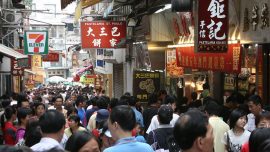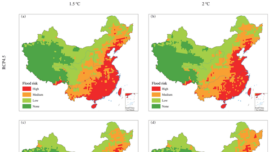
Macau Business | June 2022
By José I. Duarte | Economist, Macau Business Senior Analyst
Gross Domestic Product figures for the first quarter give us reason to be kind of blue (apologies to Miles Davis). When we would expect things to be picking up, two full years into the pandemic, the numbers are not only in the red – they appear to be getting a darker hue.
GDP was down nearly 9 per cent at current prices compared to the same period last year. The same figure one year earlier was close to minus one per cent, a comparatively insignificant number. Especially if we bear in mind that the denominator for the ratio then was the 2020 first-quarter GDP, which contained the last ‘normal’ month before the crisis.
The growth momentum seems totally lost for the moment. The recent Labour Day failed to meet expectations – again. It was another missed steppingstone in a long row of unfulfilled promises. Just as it was the case before with the Chinese New Year week; and the Christmas and New Year period before that – and we could go on through earlier periods that raised similar expectations that were not met.
The borders remain closed to most, if not all, foreigners. The flows from Hong Kong and Taiwan are yet to restart, and no clear path or schedule exists for that purpose. Until recently, the only source with a modicum of vitality was mainland China, albeit at a much-reduced level if compared with the standards set before the crisis. Even there, things appear to be changing for the worse, as various regional COVID outbreaks and lockdowns of varying intensity pop up. Further, there seems to be an active discouragement for people traveling.

A tourist economy without tourists is not just an oxymoron; it is a practical impossibility. The prolongation of the situation, without an end in sight, raises increasingly awkward questions about the survival of many small businesses in town; and the viability, on the current configuration, of casinos, hotels, and integrated resorts built to accommodate flows of tourists ten times bigger.
Indeed, these facilities can be profitable under various (stable) scenarios concerning both visitor profiles and flow sizes. Still, it is doubtful the current situation can be sustained for much longer without permanent staff redundancies and premises deactivation. On present trends, we seem bent on a protracted demise, with significant destruction of the region’s economic structure.
Pain can, here and there, be somewhat alleviated with palliative measures, such as the soon-to-begin consumption subsidy. The restart of such a scheme signals the renewal of the government’s commitment to lighten the burden imposed by epidemic control measures. But it is unlikely to produce more than a minor effect.
First, the size is modest. For practical purposes, forget the two components structure – a ‘base subsidy’ of five thousand patacas now, complemented with three thousand later, depending on the actual usage of the initial credit. We are talking about eight thousand patacas for residency cardholders, the equivalent of about 670 patacas per month.
The subsidy may be significant for people on a very low income or people losing jobs and their main, if not the sole, source of income. But it is surely not life-changing for anyone. Further, even ignoring questions about the actual impact on overall private consumption, the involved expenditure represents a minor share of families’ consumption and is almost negligible in terms of total income.
Any credible, sustained recovery needs the confidence that only increasing numbers of visitors can bring and assurances on the government’s commitment to such purpose. Otherwise, we are condemned to occasional and increasingly unsustainable attempts to limit damage as a slow-motion crash progresses before our (wary-ish) eyes.
























